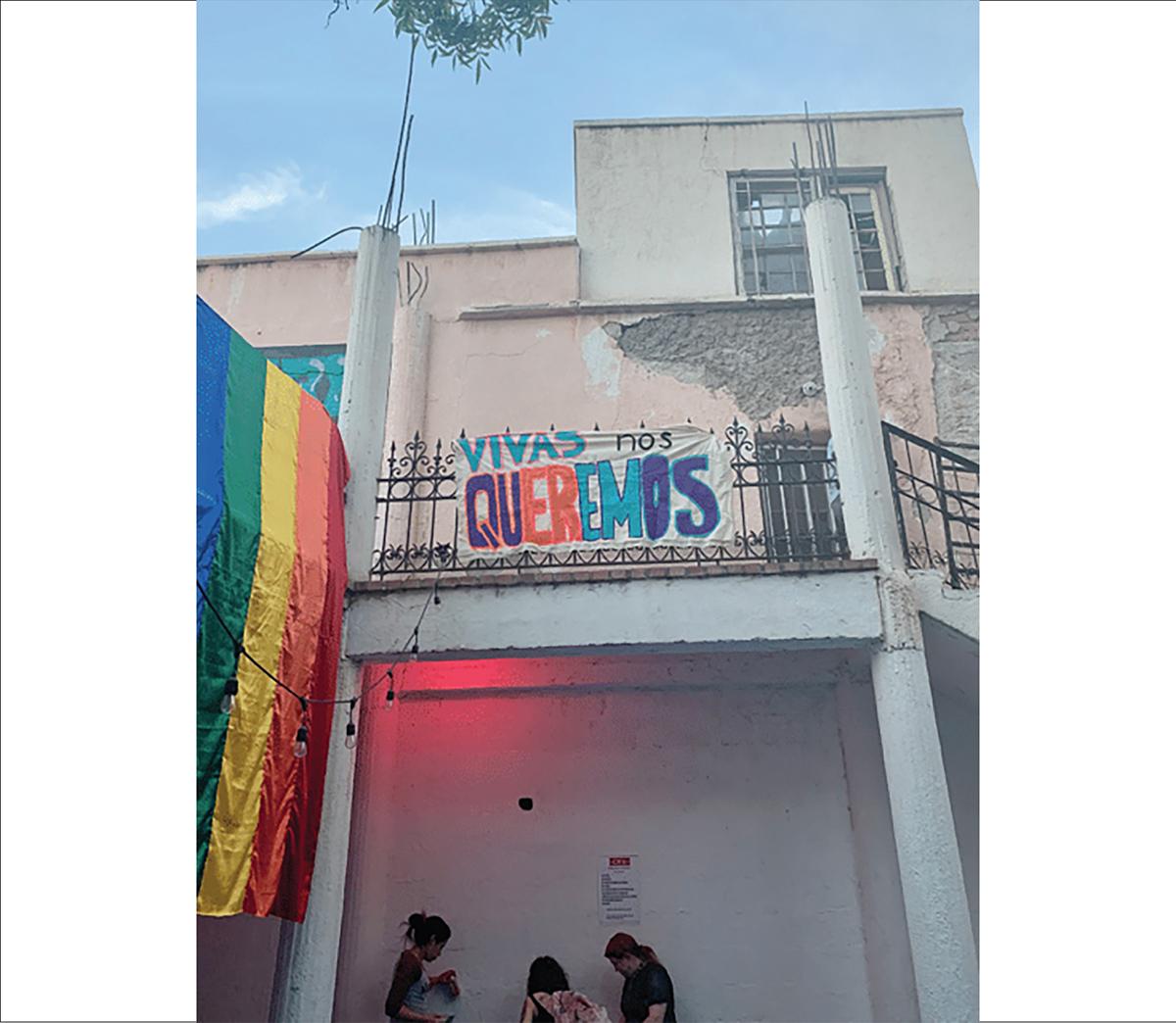
by Polet Campos-Melchor , PhD Candidate, Department of Anthropology
The title, “El Noa Noa,” was inspired by Juan Gabriel’s nod to an infamous bar in Ciudad Juarez that burned down in 2004. The bar once hosted queer artists and was a reminder of the music and spirit of Juan Gabriel, the angel of the city. After my 2019 summer fieldwork at Respetttrans, a trans asylum seeker shelter in Ciudad Juarez, I was inspired to celebrate the lives of trans women through my research and practice. I expected to return in Summer 2020 to create a loteria with the community and a transfronteriza artist. The pandemic made the return impossible.
The violences experienced by trans asylum seekers awaiting asylum are ongoing. While my summer 2019 fieldwork examined the experiences of trans women facing transmisogyny, xenophobia, and homophobia during their experience with the Remain in Mexico Policy in Ciudad Juarez, my 2020 summer fieldwork was set to document the lives of trans asylum seekers being celebrated in Ciudad Juarez. With the support of the Center for the Study of Women in Society, I was able to finalize transcription from my 2019 research and conduct 10 follow-up interviews with my interlocutors. This resulted in my Masters thesis, submitted to the Department of Anthropology and approved in December 2020.
In 2019, I was walking down Calle Hospital in Ciudad Juárez, when I saw a bright pink house with rainbow and trans flags hanging from the roof. Asking around my volunteer networks in El Paso, I soon came to find out that the pink house was a shelter, known as Respetttrans. It was run by Grecia, a nurse and the Rarámuri Mennonite “mother” of the lesbian, gay, bisexual, transgender (LGBT+) shelter. Grecia is a well-known member of the LGBT+ community in Ciudad Juárez, and her goal is to keep trans women off the streets and place them into homes and jobs where they feel safe and welcome. In the year that I conducted fieldwork, Grecia taught me that love is a verb; that love informs trans asylum seekers’ migration experiences at the U.S.–México border.
Trans asylum seekers at the U.S.- México border exist and live at the intersections of trans bigotry, xenophobia, and homophobia. Kimberlé Crenshaw has theorized intersectionality as “a lens through which you can see where power comes and collides, where it interlocks and intersects.” Through an intersectional lens, it is possible to say that it is not just a problem of transphobia; trans asylum seekers are impacted by contemporary U.S. and Mexican migration policies, by the ways in which they are racialized and gendered by state institutions and by society, as well as by homophobia that marks their bodies as deviant. For trans asylum seekers, living at the intersections can mean becoming invisible, losing their lives, confronting structural violence, and struggling with U.S. asylum processes.
To secure their safety and survival they call upon community networks. These community networks extend from Central America all the way up to the northern states of the United States. They form a network of love that enables trans asylum seekers to navigate trans bigotry and the resulting isolation and neglect, ridicule and shame, and social marginalization. Love mitigates transphobia through actions, and I draw on the work of Audre Lorde. Lorde does not discuss love directly; she theorized the erotic as “a resource within each of us that lies in a deeply female and spiritual plane, firmly rooted in the power of our unexpressed or unrecognized feeling.” Lyndon Gill adds to this definition by theorizing the erotic as “a perspectival trinity that holds together the political-sensual-spiritual.” Gill’s contribution pieces together queer bodies, politics, and emotions as whole and theorizes the erotic as a means beyond survival. My concept of love mobilizes these definitions to suggest that love is an aspect of the erotic and manifested power between trans asylum seekers.
As a survival strategy, love is what Chela Sandoval articulates as social movement between citizen-activists who work towards freedom. Love then creates a discourse on space and action. Chicana feminist intersectional theory attends to the creation of sitios y lenguas (a space and language) through discursive action. As articulated by Emma Pérez, “our work emerges from un sitio y una lengua that rejects colonial ideology and the by-products of colonialism and capitalist patriarchy–sexism, racism, homophobia…Chicanas seize sociosexual power [to create] our own sitio y lengua.” I engage theorizations of love to consider new sitios y lenguas, as shared between trans women at the U.S.–México border to inform their survival strategies. Among trans asylum seekers, love and survival looks like pasarelas (fashion runaways), cooking for each other, watching out for each other on the street, passing information on the asylum process, visiting each other in hospitals, watching movies together, sharing food and stories. As if watched over by the spirit of Juan Gabriel, love is a verb that enables trans asylum seekers to create a space for themselves at the intersections.
—Polet Campos-Melchor is a PhD candidate in anthropology. She received a 2020 Graduate Student Research Grant from CSWS.
REFERENCES
1 “Kimberlé Crenshaw on Intersectionality, More than Two Decades Later” https://www.law.columbia.edu/news/archive/kimberle-crenshaw-intersectionality-more-two-decades-later
2 Kimberlé Crenshaw. "Demarginalizing the intersection of race and sex: A black feminist critique of antidiscrimination doctrine, feminist theory and antiracist politics." U. Chi. Legal f. (1989): 139.
3 Marshall K. Cheney, Mary J. Gowin, E. Laurette Taylor, Melissa Frey, Jamie Dunnington, Ghadah Alshuwaiyer, J. Kathleen Huber, Mary Camero Garcia, and Grady C. Wray. "Living outside the gender box in Mexico: testimony of transgender Mexican asylum seekers." American Journal of Public Health 107, no. 10 (2017): 1646-1652.
4 Audre Lorde. "I Am Your Sister." Collected and Unpublished Writings of Audre Lorde, edited by Rudolph P. Byrd et al." (2009): 53.
5 Lyndon K. Gill. Erotic Islands: Art and Activism in the Queer Caribbean. Duke University Press, (2018): 10.
6 Chela Sandoval. Methodology of the Oppressed. Vol. 18. U of Minnesota Press, (2013): 183.
7 Emma Pérez, “Sexuality and Discourse: Notes From a Chicana Survivor,” in Chicana Lesbians: The Girls Our Mothers Warned Us About. (Berkeley: Third Woman Press, 1991), 161.

